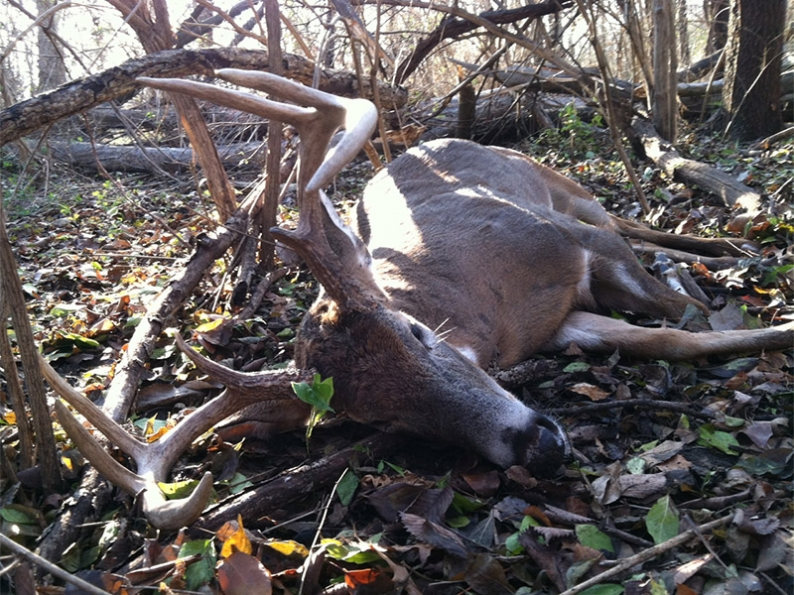
Eight things your taxidermist will love you for
Anyone who plops their money down at the taxidermy shop wants and expects a great looking mount. Hunters expect a lot from their taxidermist and that’s reasonable. But remember: He or she can only work with what they’re brought.
Many hunters don’t fully understand or consider how their own actions in the field impact the quality (or lack thereof) of their finished mounts. Follow these eight tips to thrill your taxidermist and maximize your own gratification when the exciting time to pick up your completed trophy arrives.
Talk to your taxidermist
Select a quality taxidermist and talk with them before your hunt. Explain where and how you’ll be hunting, what animal(s) you’ll pursue, and what resources you’ll have access to. Your taxidermist will be pleased to provide you with specific instructions for field dressing, caping or skinning (if necessary) and overall care of your animal to ensure the best possible mount. If you will be hunting in a location with no immediate access to a taxidermist or freezer, ask your taxidermist for detailed instructions on skinning and salting the hide. This is the only way to preserve your hide for mounting when hunting in remote or wilderness situations. Be aware that salting is only effective when the entire hide is skinned (including head and feet) and properly fleshed out.
Be prepared
Make sure you leave enough room in your hunting pack for the gear that will allow you to take care of your trophy. Other than knowledge, the most important tool for proper trophy care in the field is a knife with a sharp blade. Multiple knives or individual knives with different specialized blades are helpful. Be sure to pack one or more sharpening tools to keep all blades in top shape. If you don’t already pack toilet paper, throw a roll in your pack to help clean blood off the hide. A bright light or headlamp will ensure you can clearly see what you are doing while field dressing or skinning after dark.
Dos and don’ts of dragging
Once your animal is down, try to avoid dragging it – especially with a rope. A rope around the neck almost always removes and damages hair, while rocks, sticks and the ground itself can also easily damage or puncture the hide. Instead, get it back to the truck or camp by placing it on a sled, rickshaw, or ATV. If you absolutely need to drag it, grab the animal by the antlers and lift as much of the front of its body as possible off of the ground. Never drag an animal by the hind legs.
Field dressing
Again, obtain specific field dressing instructions from your taxidermist before the hunt. Don’t cut open the chest cavity if you plan to have a shoulder mount made, and never slit the throat. Don’t make any cuts above the brisket or breastplate. Make your cuts with a sharp knife or gut hook. Always cut with the blade up. Once opened, cut the diaphragm away from the ribs all the way to the backbone area. Reach into the forward chest cavity, find the esophagus (wind pipe), and cut it off as far up in the neck as possible. Grasp the esophagus firmly and pull downward in a continuous motion to remove all the entrails.
Bottoms up
Never hang any animal by the neck; it stretches the neck and may damage the hide. For deer-sized game, use a gambrel and hang it by the hind legs.
Caping / skinning
Caping or skinning your big game trophy is best left to your taxidermist. Damage to a hide can be costly to repair, and some types of damage simply can’t be fixed. If you must skin your trophy yourself, consider leaving the head attached to the cape, and let your taxidermist turn out the delicate eyes, nose, lips and ears.
Keep it clean
Blood left on a hide for any length of time can easily leave permanent stains. Clean any blood off areas of the hide that will be mounted with snow or water as soon as possible. You remembered the toilet paper, right? Place some inside the animal’s mouth and nostrils to stop blood from leaking out – especially while hanging. Take care of your trophy during transportation. Don’t let it roll or bounce around in a dirty pickup bed. Take care to clean off all blood prior to transport, and wrap the animal or cape in an old sheet or blanket.
Get to it
Many trophies are compromised within the first few hours, as bacteria begin to attack quickly after death, especially in warm, humid weather. Completely skin, flesh and salt your hides (per your taxidermist’s detailed instructions) as quickly as possible when hunting in remote areas. Heat and moisture are the two main causes of hair slip. When hunting closer to home, keep every animal as cold as possible and bring it in to your taxidermist as soon as possible.